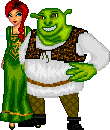Choose one group whom you believe is inadequately represented in the media. Discuss some examples of how this group is represented and why the group is represented in this way?
In the past, the biggest problem Asians have been faced with is being invisible in the media. However, successful television programmes such as “Goodness Gracious Me”, “Mind Your Language” and “Bharji on the beach” have increased the awareness of Asians. Despite these successful television programmes there is still a lack of Asians and the vast amount portrayed are represented inadequately represented seeing that in each of these successful television shows the Asians have been placed in conventional stereotypical roles. The stereotypes used are to create humour and this reinforces the role of the “brown clown” theorised by Stuart Hall.
Furthermore, by placing Asians in these comedy roles reinforces Nandy’s theory on “the other” which gives makes them less threatening to the white audiences because the comical characteristics given make them less inspirational as the audiences are encourage to laugh at them. An example that illustrates this is “Mind Your Language” where the audiences are laughing at Ali’s misunderstandings and his accent. On the other hand, films like “Bombay Dreams” (2004, Lena Koppel) emphasises the glamorous aspect of Asian culture. This is further promoted by British celebrity Elizabeth Hurley as she was dressed in a sari to her wedding which demonstrates how western society these days are acceptable to Asian culture.
Whereas, in the past Asian clothing such as salwar kameez were seen as “naff” which made Asians feel embarrassed to be seen in them. An example of a film that illustrates this is “Anita and Me” (2002, Meera Syal) a comedy drama and a coming of age film set in the 1970s, showing a young Asian girl Meena ashamed to be seen in Indian clothes, as she aspires to be more like Anita a white teenage girl who is represented as glamorous and attractive. This is accomplished through showing her in a point of view shot of her walking out of smoke in slow motion.
However, the change of attitudes to Asians clothing can be down to films like “Bend it like Beckham” (2002, Gurinder Chadha) where the protagonists are shown in both western and Asian clothing and comfortable in it. This mixing of the two cultures supports Homi Bhabha’s theory on the “third space” which is a hybrid of the two cultures giving the audience something new, different and unrecognisable so that a new area of recognition and meaning is created. Furthermore, the idea of the “third space” is promoted in the current music industry today as mainstream hip-hop artists like Dr Dre, Redman and Bubba Sparxxx have composed music videos were they have English lyrics with Indian music exemplifying and promoting Asian culture.
Furthermore, the increase of Asians and Asian culture is down to migration which now makes them 3.5% of the total UK population. Having this many Asians has helped society become more multicultural and progressive and this is evident because of the “brown pound” which is becoming stronger as modern Asians are in high paid jobs such as a doctor’s work of line. Despite, this achievement, successful animated television programme “The Simpsons” show Apu the token Asian in the stereotypical “shopkeeper” role, reinforcing traditional stereotypes. But then again, it could be argued that this stereotype is true as most Asians are still shopkeepers or work in shops as a pose to offices. Additionally, the September 11th attacks in America have publicized Asians in a negative light as they are shown as terrorists who are seen as uncivilised, barbaric and devious; again supporting Nandy’s theory on “the other”. As a result of this today society suffers moral panic causing Islamophobia to be evident.
In conclusion, 78% of the Asians feel they are better represented but lack of Asians in the media still remain low as BBC ex general Gregg Dyke states how the “BBC are hideously white” (2002) which to some extent goes against it’s remit as they have to reflect cultural diversity and having only 4% of ethnic minorities in management roles reflects how Asians still are inadequately represented.
Sunday, May 27, 2007
Subscribe to:
Post Comments (Atom)



2 comments:
Good effort...a range of texts & theorists covered although some missed opportunities to refer to others (eg Cohen when you talk about moral panics...always use the name too!)
Hall talks about the 'black clown'...it's us who've reworked this idea to identify the Indian/Asian 'brown clown'
Good on contemporary elements but not so good on historical aspects...always situate historically any text you include (e.g. 'MYL' has no date attached and this could have led you to talk about the 1970s, the rise of the National Front, riots on the streets of Southall, increased racism partly down to more immigration, etc.)
Also, you must talk about colonialism and the stereotypes that emerged from that era.
Overall, a low B.
As regards all the work you've been doing this last week or so in preparation for your exams...well done!
This is certainly the most thorough and focussed approach I've seen which is no surprise, really, since you've led the way all year in terms of your effort, especially on your blog.
Keep it up...not long to go now!
Post a Comment